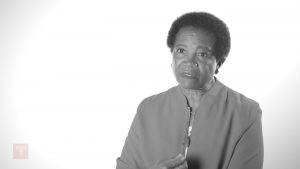Moral Incongruence and Compulsive Sexual Behavior: Results From Cross-Sectional Interactions and Parallel Growth Curve Analyses
AUTHOR(S)
PUBLISHED
2020 in Journal of Abnormal Psychology
KEY FINDINGS
- This study found that moral incongruence surrounding pornography use is associated with self-reported compulsive sexual behavior.
ABSTRACT
Despite controversies about the diagnosis, the World Health Organization recently elected to include compulsive sexual behavior disorder in the 11th edition of the International Classification of Diseases. Both recent and remote works have suggested that various cultural factors such as personal religiousness and morality can influence both the experience and expression of compulsive sexual behaviors. Because prior works have indicated that pornography use is likely to be the most common expression of compulsive sexual behavior,... READ FULL ABSTRACT
EXCERPTS
- "We also note that, somewhat unexpectedly, greater initial use of pornography seems to be associated with decreases in pornography use, in self-reported pornography problems, and in moral disapproval of pornography use. That is, although greater initial pornography use was concurrently associated with greater self-reported problems, over time, it actually predicted decreases in self-reported problems. Potentially, this could be the result of a ceiling effect, but given the positive skew of the variable and the overall low levels of use reported by most people, this seems unlikely. It is also plausible that high levels of use at baseline are found only among people currently experiencing problems with pornography viewing and that, over time, they are more likely to regress to normal levels of use. Further longitudinal studies of the role of use in predicting changes in self-perception and behavior are needed."
- "The novel diagnostic criteria for CSBD in the ICD-11 note that CSBD-related symptoms such as distress or impairment cannot be the sole result of moral incongruence or religious distress (Kraus et al., 2018). This is an important caveat given the body of prior research documenting that moral incongruence is clearly a contributing factor to self-reports of pornography-related problems. The results of the present study suggest that simply distinguishing between the two might not be an entirely straightforward endeavor. In a series of nonclinical samples, moral incongruence seemed to play a vital role in the experience of pornography-related problems. The trajectories of self-reported problems and self-reported moral disapproval of pornography use were strongly correlated over time. Moreover, although self-reported problems and actual pornography use behaviors also covaried together positively, baseline levels of both variables actually predicted decreases in both slopes over time. More simply, greater feelings of addiction and greater use of pornography both predicted decreases in pornography use and decreases in self-reported feelings of addiction. Collectively, this body of evidence strongly suggests that the links between self-reported feelings of dysregulation or addiction, self-reported use of pornography, and moral disapproval of pornography maintain complex relationships that do not easily integrate with prior literature on other addictive behavior patterns."



